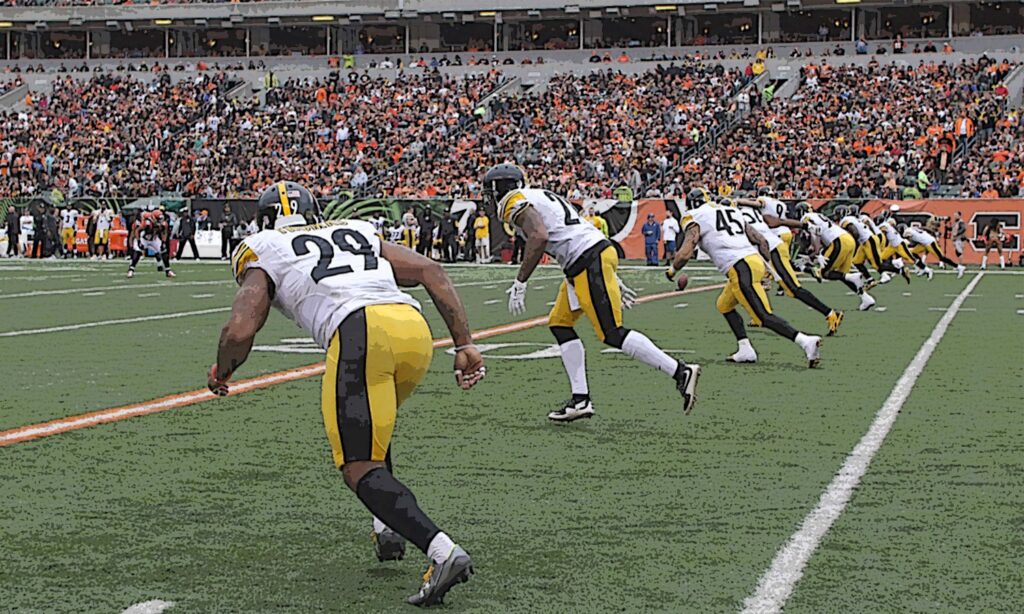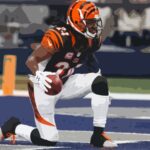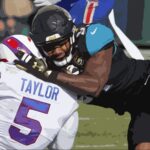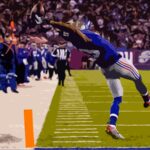In the NFL and other football leagues, teams are made up of three groups of players: offense, defense and special teams.
As you might already know, when the offense is out on one side, the other team is fielding their defensive squad.
For the most part, the teams swap positions following a touchdown, field goal, fumble, interception or punt.
When a possession change is expected, that’s when you’ll see special teams in action.
Special Teams are almost always called out on the final play of each drive and the start of every kickoff.
The exception is when offensive team attempts to “go for it” on fourth down. Which simply means they want to keep their drive alive by getting the first down or scoring.
In any case, let’s answer the question you came here for…
What is Special Teams in Football?
In football, special teams refer to the units responsible for the kicking and returning plays. These include field goal attempts, kickoffs, punts, and punt returns. Special teams play a crucial role in field position, scoring opportunities, and can shift the momentum of a game through successful execution of kicks, blocks, and returns.
Note that special teams can be assembled from players that normally play on offense or defense.
But during the transition sequence they are considered part of the special teams unit.
Note that you’ll never see the starting quarterback on special teams at a professional level.
However, the backup quarterback might be used as the holder on the field goal or extra point attempt.
Positions in Special Teams
When it comes to special teams, the players on the field are either part of the kicking team or the returning team.
In the case of a field goal or extra point attempt, the opponent makes up the blocking team.
Note that special teams will be made up of players that are also part of the offensive or defensive lineup.
While on special teams, they do not carry the same responsibilities or positions.
Now let’s take a look at all the positions that make up each side in special teams.
Kicking Team
Position Description
Kicker The player responsible for kicking off or attempting field goals and extra points.
Punter The player who punts the ball to the opposing team on fourth down.
Long Snapper The specialist responsible for accurately snapping the ball to the punter or holder.
Holder The player who holds the ball for field goal and extra point attempts.
Gunners Fast and agile players who are the first to sprint down the field on punts to tackle the returner. They line up wide on each side of the line of scrimmage.
Coverage Players These players are responsible for covering the kick or punt, and they often make tackles on returners.
Upbacks Players positioned behind the line of scrimmage who help protect the punter and can also receive short snaps on punts.
Onside Kick Team Players positioned to execute onside kick attempts, with specific assignments to recover the ball quickly.
Hands Team A group of players with good ball-handling skills who are often positioned to recover onside kicks.
Kick Returners Players who receive kickoffs and attempt to return them for yardage.
Kick Coverage Players who sprint down the field to tackle the kick returner and prevent long returns.
Returning or Blocking Team
Position Description
Returner (Kickoff) The player who receives the kickoff and attempts to return it for yardage.
Returner (Punt) The player who receives the punt and attempts to return it for yardage.
Upbacks Players positioned near the line of scrimmage, often responsible for blocking or receiving short snaps on punts.
Blockers (Front Line) The players forming the initial blocking wall to protect the returner on punts or kickoffs.
Blockers (Wings) Players positioned on the sides of the front line to assist in blocking and covering kicks.
Wedge Busters Players tasked with breaking up any wedge formations used by the return team on kickoffs.
Gunners Fast and agile players who sprint down the field on punts to tackle the returner. They often line up wide on each side of the line of scrimmage.
Personal Protectors Players responsible for protecting the punter during punts and ensuring a clean snap and kick.
Hands Team A group of players with good ball-handling skills often positioned to recover onside kicks.
Kick Blockers Players assigned to attempt to block field goals and extra point attempts.
Special Teams Strategies and Plays
Now that I’ve covered all the positions, let’s look at the various scenarios that can take place for both sides.
For a clear understanding, I’ll break these down by sequence.
Kickoff
On the kickoff, the kicker has mainly three choices.
Deep Kick
The standard option is the deep kick, to minimize the chance of a return. The hope is to kick it passed the end zone to force the touchback.
Teams now can opt for a fair catch anywhere behind the 25-yard line, which also results on a touchback.
The reason for the new rule is that the NFL wants to cut down on injuries during the kickoff. They want to reduce the number of times teams run the ball.
Squib Kick
Another option is the squib kick, which is a low, bouncing kick aimed at preventing a long return.
Rather than kick the ball to the designated returner, the kicker will target another player on the field.
This method will reduce the possibility of a long return.
Onside Kick
This play is designed specifically recover the ball after the kickoff.
It’s a surprise play in which the kicking team must kick the ball at least 10 yards from the spot and hope to recover the ball before the returning team does.
If successful, the kicking team will be granted first down.
Punt
As opposed to the kickoff, the goal in punting is to kick the ball as deep as possible without it reaching the end zone.
Teams will punt the ball on the fourth down if they are not close enough for a field goal attempt.
The purpose of a punt is for field position. You want the opponent to start their drive as far away from your own end zone to prevent them from scoring.
Once the ball is punted, the most likely scenarios is a punt return, a fair catch or dead ball if it hits the ground and the punting unit recovers first.
Other less likely scenarios include muffed punt on the fair catch attempt, dropped ball or the punt being kick out of bounds.
It’s also possible for the returning team to block the punt attempt altogether. Following the block, the ball is still live and either team can grab possession.
If the punting team recovers, they can still run, pass or attempt another kick. If the ball is downed behind the first down mark, it will result in a turnover on downs.
Meanwhile, should the returning team gain possession, they can run the ball knowing they will have first down on the subsequent play.
Extra Point or Field Goal
Special Teams involving an attempt to score play out in almost the same manner.
The possession team is trying to kick the ball between the uprights, while the blocking is trying to prevent the scoring attempt.
The most likely outcome is for the kicker to score or to miss wide (especially from greater distances or due to high winds).
If the snapper or the holder mishandle the ball, the offensive team will likely scramble to pass or run the ball as a desperate attempt to keep the play alive.
In a field goal situation possession would shift to the opposing team if they don’t get to the end zone or get a first down.
On the extra point attempt, the ball must end up in the end zone otherwise the play is dead.
If the blocking team successfully blocks the kick behind the line of scrimmage, the ball is still live.
That means, if the ball is recovered by the blocking team, they can run the ball to the opposing team’s end zone.
If the blocking team manages this play on a field goal attempt, the play can result in a touchdown or they cause a turnover, at the very least.
During a extra point attempt, the blocking team can return the ball to the other end zone for a two-point conversion - otherwise, the play is deemed dead.
The next play after every extra point attempt is a kickoff by the same team that just scored a touchdown.
Final Thoughts
Anybody who watches football knows that plays involving special teams can be the most exciting part of the game.
For the most part, you’ll see touchbacks, fair catches and returns for minor yard gains. These stem from kickoffs and punts.
During field goal or the extra point formations, the most probable outcome is a successful attempt.
But deep down inside, we’re all hoping for the unlikeliest of outcomes.
We’re talking about long kick returns for touchdowns, blocked punts, fumbles, botched snaps, onside kicks, punts recovered at the 1-yard line and the list goes on.
These types of plays can drastically shift the momentum of the game.
Generally, we are wired to believe that the offensive and defensive pairing will carry a team to victory.
But it’s not always the case.
Just when we get too comfortable or complacent, special teams make a big splash.






